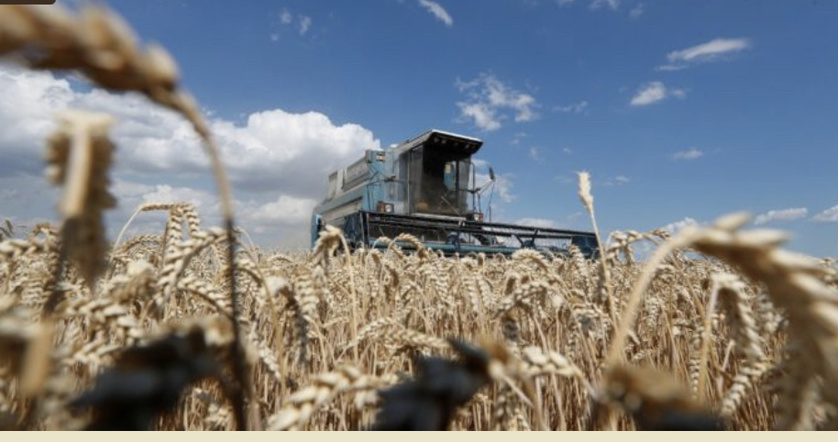
Facing potential food supply shortages, some countries have adopted policies limiting food exports, raising concerns globally about food supply and exacerbating food inflation woes.
Since the beginning of the war with Ukraine in late February, about 30 nations have taken steps to restrict certain food exports.
Ukraine—known as the breadbasket of the world—shut its ports early in the war and subsequently banned the export of buckwheat, millet, barley, rye, salt, sugar, and meat. It also imposed export licenses on sunflower oil, corn, and wheat. The export ban is to remain in effect until the end of the year.
Russia announced a ban on exports of sunflower seeds and imposed a 700,000-ton export quota on sunflower meal until Aug. 31. It also suspended exports of corn, rye, meslin, wheat, and barley until June 30.
Serbia has restricted the export of flour, wheat, corn, and cooking oil till year-end.
The number of people who are heading toward starvation has increased to 276 million from 80 million during the past four to five years, David Beasley, executive director for the U.N. World Food Programme, told Reuters.
“We were facing an extraordinary food crisis before Ukraine, food costs, commodity prices, shipping costs were already doubling, tripling, quadrupling,” Beasley said.
Egypt has blocked the export of onions, eggplant, potatoes, and tomatoes for an indefinite period.
Turkey banned exporting several grain products, as well as butter, goat meat, beef, and mutton until Dec. 31 after inflation spiked 54 percent in February. Meat prices have risen by almost 50 percent in the country.
Argentina has capped the export volume of wheat and corn. The restriction, blamed on domestic inflation, has resulted in reducing exports for the current cycle to 25 million tons in December 2021, from 41.6 million tons during the prior season.
India has restricted the export of wheat, only agreeing to export it to nations that need wheat for meeting food security requirements. The government has also capped sugar exports at 10 million tons for the market year, which runs through September.
Heat waves across South Asia have resulted in agricultural losses and pushed up prices in the domestic market. The sudden governmental restriction shocked international markets as India—the second-biggest wheat producer in the world after China—had previously assured that climatic changes wouldn’t affect its export numbers.
As a result, global wheat prices jumped 6 percent, with futures trading hitting $12.4 per bushel on Monday, the highest level in two months. Although prices cooled down a bit later on, it’s still up by nearly 50 percent since the Russian invasion.
Malaysia has announced a ban on chicken exports, triggering worries in Singapore, which gets a third of its supplies from Kuala Lumpur.
“Lower-income households in the UK and the U.S. are struggling to feed themselves,” Sonia Akter, an assistant professor specializing in agriculture at the Lee Kuan Yew School of Public Policy at the National University of Singapore, told Bloomberg.
Rising prices “will disproportionately affect poor people who spend a large share of their income on food,” she said.
In the United States, the 12-month consumer inflation was at 8.3 percent in April, remaining close to the four-decade high of 8.5 percent registered in March. Food prices in April had risen by 9.4 percent on an annual basis, while energy prices rose by 30.3 percent.

















